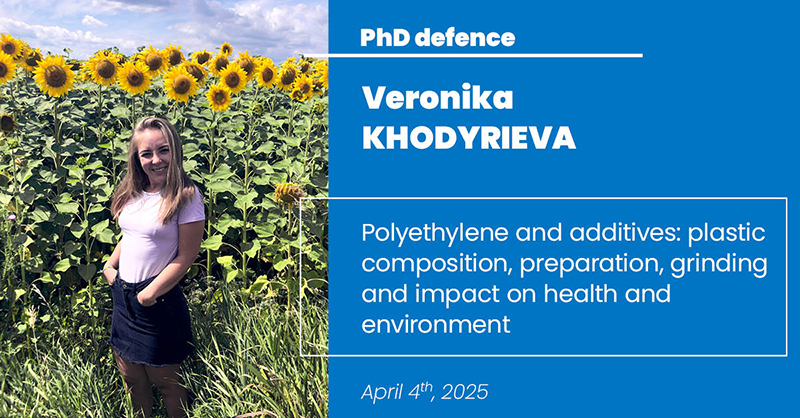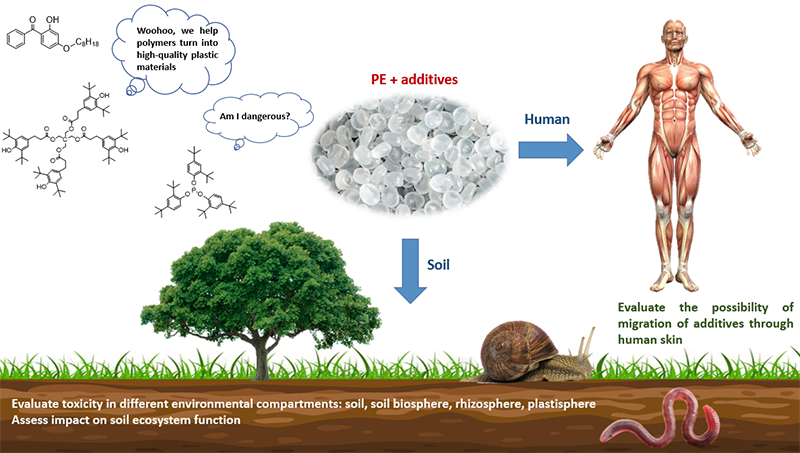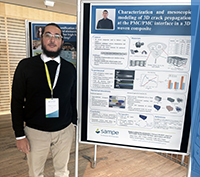PhD defence of Veronika Khodyrieva
Polyethylene and additives: plastic composition, preparation, grinding and impact on health and environment

Veronika Khodyrieva conducted her doctoral research work in the research team S&P within the collaboration of the Institut de Chimie de Nice, Côte d’Azur University in the framework of the ANR project NIAS. She defends her PhD in Fundamental and Applied Sciences on Paril 4th, 2025 in front of the following jury:
Mrs Christelle DELAITE, Université de Haute-Alsace
Mr. Pascal CARRIERE, Université de Toulon
Mrs Fabienne LAGARDE, Université Le Mans
Mrs Véronique BOUNOR-LEGARE, IMP Lyon – Université Claude Bernard
Mrs Veronica AMBROGI, Université Federico II de Naples
Mrs Alice MIJA, Université Côte d’Azur
Mrs Christelle COMBEAUD, Mines Paris – PSL
Mr. Patrick NAVARD, Mines Paris – PSL
Mr. Étienne GRAU, Université de Bordeaux
Mrs Hanan OSMAN-PONCHET, PKDERM
Abstract:
Plastics are an essential part of modern society, yet their widespread use raises concerns regarding environmental contamination and human health risks. While much research has focused on microplastic formation and degradation, limited attention has been given to the migration of plastic additives into biological systems. This thesis investigates the preparation and characterization of polyethylene microplastics containing industrially relevant additives, their impact on the physicochemical properties of the polymer, and their potential migration into human skin. A methodology was developed to produce polyethylene microplastics with controlled additive content and particle size distribution, closely resembling those found in environmental conditions. Characterization revealed significant heterogeneity in particle shape and size, making them more representative of real-world plastic pollution. The study further explored the influence of additives on polymer crystallinity, mechanical behaviour, and the formation of non-intentionally added substances (NIAS), highlighting their potential transformations over time. A key focus of this research was the assessment of additive migration into human skin using in vitro Franz diffusion cell experiments. All tested additives exhibited migration into the epidermis, with some penetrating deeper into the dermis. However, no additives were detected in the receptor liquid, suggesting either limited transdermal migration within the experimental timeframe or concentrations below the detection threshold. The study also revealed donor-specific variations in permeability, underscoring the influence of individual skin properties on additive migration. These findings contribute to understanding the interactions between plastic additives and human skin, emphasizing the need for further research on long-term exposure risks. Future perspectives include evaluating migration in different polymer matrices, refining detection methodologies, and assessing the impact of real-life exposure conditions. Additionally, regulatory bodies should re-evaluate the list of approved additives in consumer plastics, considering their potential for dermal absorption. This work provides valuable insights for developing safer, more sustainable polymer materials while informing regulatory discussions on plastic safety.

Keywords: polyethylene, migration of plastic additives, microplastics preparation, plastic`s grinding, non-intentionally added substances (NIAS), dermal exposure








